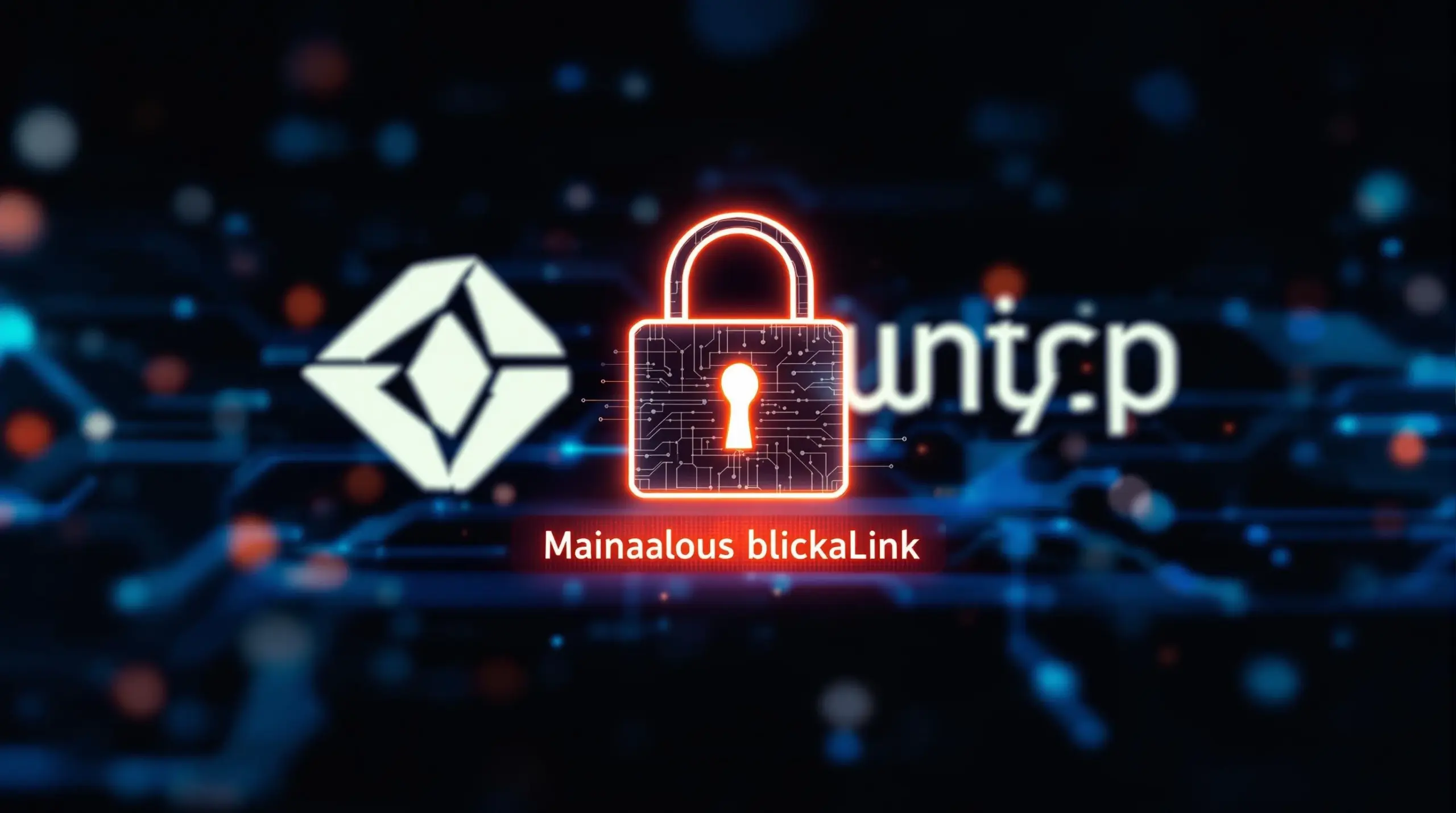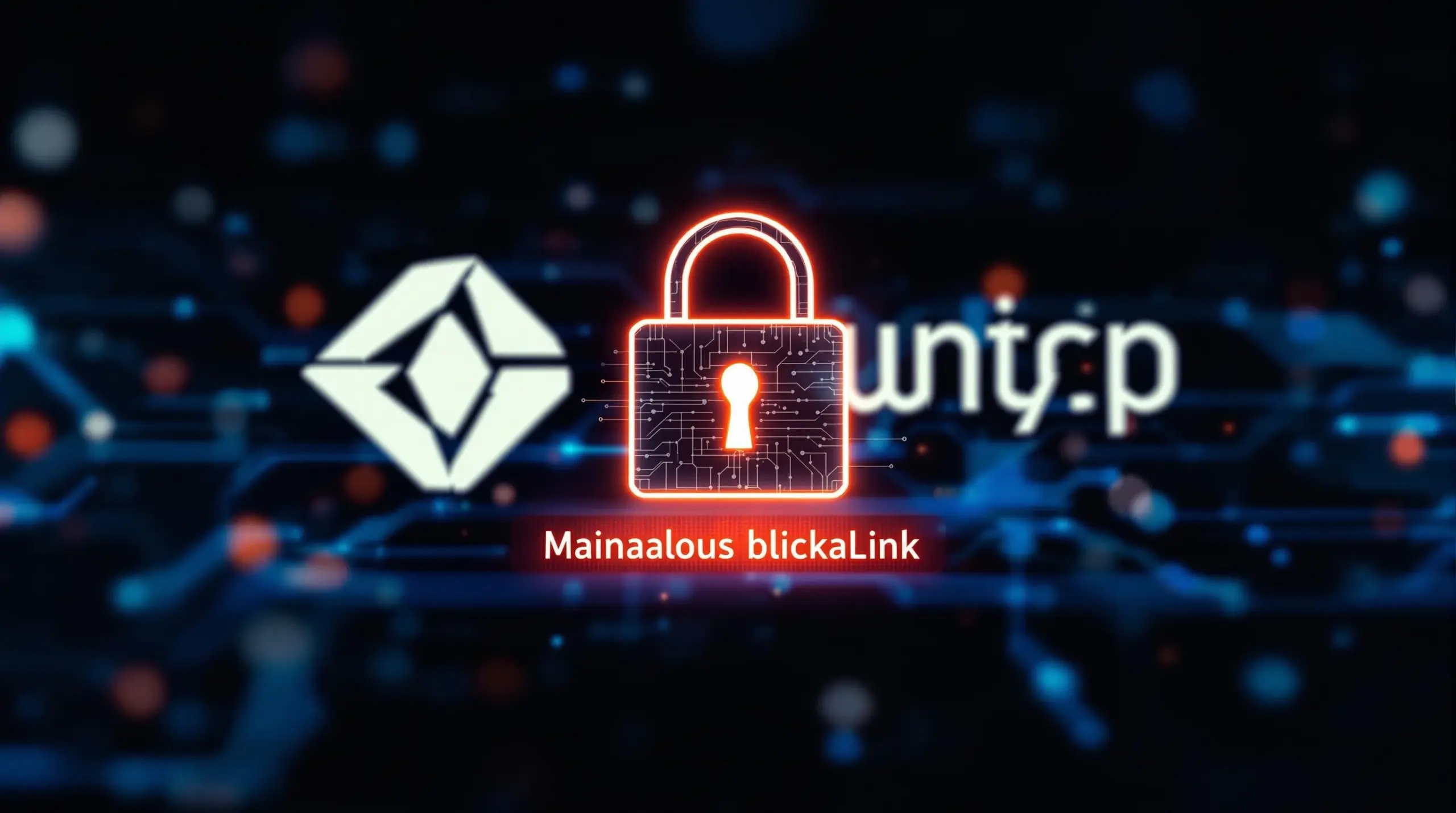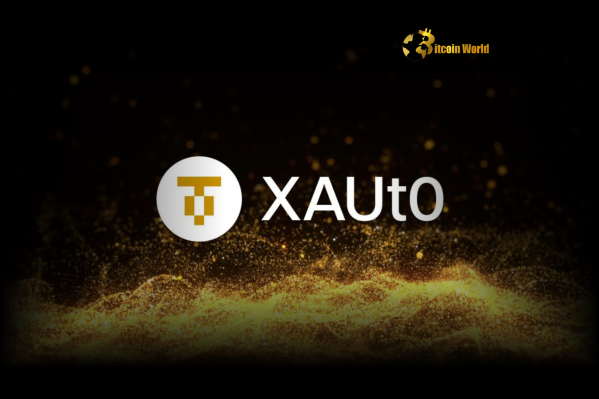BitcoinWorld

Urgent Binance Warning: Safeguarding Your Digital Assets from Deceptive Trusta.AI Phishing Links
In the fast-paced world of cryptocurrency, where innovation meets investment, the need for robust security has never been more critical. As digital assets become increasingly integrated into our daily lives, so too do the sophisticated threats designed to compromise them. Recently, a significant Binance warning has echoed through the crypto community, highlighting a crucial vulnerability that every user must be aware of: deceptive links masquerading as legitimate platforms.
Understanding the Urgent Binance Warning: What You Need to Know
Binance, one of the world’s leading cryptocurrency exchanges, recently took to X (formerly Twitter) to issue a vital alert. The core of their message was clear and unequivocal: users must exercise extreme caution when encountering links related to Trusta.AI. This platform, which is an integral feature on both Binance Alpha and Binance Futures, has been targeted by malicious actors. The official and only legitimate website for Trusta.AI is trustalabs.ai.
Why is this Binance warning so important? Because scammers are actively creating and promoting unaffiliated, potentially fake websites that mimic the legitimate Trusta.AI platform. These fake sites are designed with one primary goal: to trick unsuspecting users into divulging sensitive information, such as login credentials, private keys, or even directly sending funds to attacker-controlled wallets. The consequence of falling for such a trap can be devastating, leading to the irreversible loss of your valuable digital assets.
The Rising Threat of Crypto Phishing: Why Vigilance is Key for Trusta.AI Security
The incident with Trusta.AI is a stark reminder of the pervasive threat of crypto phishing. Phishing is a cybercrime in which a target or targets are contacted by email, telephone, or text message by someone posing as a legitimate institution to lure individuals into providing sensitive data such as personally identifiable information, banking, and credit card details, and passwords. In the crypto space, this often involves:
- Fake Websites: Mirroring legitimate exchange or dApp interfaces with slight URL variations.
- Malicious Links: Sent via email, social media, or messaging apps, designed to trick users into clicking.
- Impersonation: Scammers pretending to be official support, team members, or even well-known figures in the crypto community.
The challenge for Trusta.AI security, and indeed for any crypto platform, lies in the user’s ability to discern authenticity. Scammers are becoming increasingly sophisticated, using advanced techniques to make their fake sites look incredibly convincing. They might use similar logos, brand colors, and even replicate complex functionalities. This makes it incredibly difficult for an untrained eye to spot the difference, underscoring why every crypto holder must develop a keen sense of skepticism and verification.
Essential Online Safety Tips: Protecting Your Digital Assets
Navigating the digital landscape requires a proactive approach to online safety. Here are actionable insights and best practices to protect your valuable digital asset protection from phishing attempts and other cyber threats:
1. Always Verify the URL: Your First Line of Defense
This is perhaps the most crucial step. Before interacting with any website, especially those requiring login credentials or wallet connections, meticulously check the URL. For Trusta.AI, remember: trustalabs.ai is the only official address. Scammers often use subtle variations like:
trustaa.aitrusta-ai.comtrustalabs.co- Misspellings or extra characters.
Always type the URL directly into your browser or use a trusted bookmark. Never click on links from unsolicited emails, social media posts, or chat messages, no matter how convincing they appear.
2. Look for HTTPS and the Padlock Icon
Ensure the website uses HTTPS (Hypertext Transfer Protocol Secure) and displays a padlock icon in your browser’s address bar. While this indicates an encrypted connection, it’s not a foolproof guarantee of legitimacy, as even phishing sites can obtain SSL certificates. However, its absence is a definite red flag.
3. Enable Two-Factor Authentication (2FA) Everywhere
2FA adds an extra layer of security beyond just a password. Even if a phisher manages to get your password, they won’t be able to access your account without the second factor (e.g., a code from your phone via an authenticator app like Google Authenticator or Authy, or a hardware key like YubiKey). Enable 2FA on your exchange accounts, email, and any other critical services.
4. Use Strong, Unique Passwords
Never reuse passwords across different platforms. Use a strong, complex password that combines uppercase and lowercase letters, numbers, and symbols for each account. Consider using a reputable password manager to generate and store these securely.
5. Be Wary of Urgent or Emotional Language
Phishing attempts often employ scare tactics or create a sense of urgency (e.g., ‘Your account will be suspended if you don’t act now!’). Be skeptical of any communication that pressures you to take immediate action without proper verification.
6. Keep Your Software Updated
Regularly update your operating system, web browser, antivirus software, and any crypto-related applications. Updates often include critical security patches that protect against known vulnerabilities.
7. Consider Hardware Wallets for Cold Storage
For significant amounts of crypto, a hardware wallet (like Ledger or Trezor) offers the highest level of security. These devices keep your private keys offline, making them immune to online phishing attacks.
Actionable Steps: How to Verify Official Sources and Avoid Fake Crypto Sites
The best defense against fake crypto sites is a disciplined approach to source verification. Here’s how you can proactively protect yourself:
- Bookmark Official Sites: Once you’ve confirmed a website’s legitimacy (e.g., Binance, Trusta.AI), bookmark it. Always access the site through your bookmark, not through search engine results or external links.
- Official Announcements: Rely solely on official announcements from Binance’s verified social media channels (like their official X account with the blue checkmark), their official blog, or directly on the Binance website. If you see a warning or announcement elsewhere, cross-reference it with these official sources.
- Direct Communication: If you receive a suspicious email or message claiming to be from Binance or Trusta.AI, do not click any links. Instead, open your browser, type the official website address directly, and log in to check for any notifications or messages within your account.
- Report Suspicious Activity: If you encounter a fake link or suspect a phishing attempt, report it immediately to Binance’s security team. This helps them take action and protect other users.
The responsibility for digital asset protection ultimately rests with the user. While exchanges like Binance implement robust security measures, the human element remains the most common vulnerability. A single click on a deceptive link can undo years of careful accumulation and investment.
Conclusion: Vigilance is Your Strongest Shield
The recent Binance warning about fake Trusta.AI links serves as a potent reminder that the cryptocurrency space, while offering immense opportunities, is also a constant battleground against malicious actors. The threat of crypto phishing is ever-present, and scammers are relentlessly adapting their tactics. By internalizing essential online safety practices, meticulously verifying URLs, and maintaining a high degree of skepticism, you can significantly enhance your Trusta.AI security and overall digital asset protection. Stay informed, stay vigilant, and always prioritize your security above all else. Your financial future in the crypto world depends on it.
Frequently Asked Questions (FAQs)
Q1: What exactly is the Binance warning about Trusta.AI?
A1: Binance has warned users about fake websites impersonating Trusta.AI, a legitimate feature on Binance Alpha and Binance Futures. The only official website is trustalabs.ai. Users are urged to carefully check URLs to avoid falling victim to phishing scams.
Q2: How can I ensure Trusta.AI security when accessing the platform?
A2: To ensure Trusta.AI security, always type trustalabs.ai directly into your browser or use a trusted bookmark. Never click on links from emails, social media, or unofficial messages. Verify the URL meticulously before entering any credentials.
Q3: What are the common signs of a crypto phishing website?
A3: Common signs include subtle misspellings in the URL, unusual domain extensions (e.g., .co instead of .com or .ai), a lack of HTTPS or a padlock icon (though some fake sites have these), requests for unusual information, and a sense of urgency in accompanying messages.
Q4: Besides checking URLs, what are key online safety tips for digital asset protection?
A4: Beyond URL verification, crucial online safety tips include enabling Two-Factor Authentication (2FA) on all accounts, using strong and unique passwords, being wary of unsolicited communications, keeping all software updated, and considering hardware wallets for significant crypto holdings.
Q5: What should I do if I suspect I’ve encountered a fake crypto site or a phishing attempt?
A5: Do not interact with the suspicious site. Close the tab immediately. If you clicked a link, do not enter any information. Report the incident to Binance’s security team or the relevant platform. If you accidentally entered credentials, change your passwords immediately on legitimate sites and enable 2FA if you haven’t already.
To learn more about the latest crypto market trends and essential security practices, explore our article on key developments shaping digital asset protection in the evolving blockchain landscape.
If you found this article helpful, please consider sharing it with your friends and fellow crypto enthusiasts on social media. Your share can help raise awareness and protect others from falling victim to deceptive phishing scams. Let’s build a safer crypto community together!
This post Urgent Binance Warning: Safeguarding Your Digital Assets from Deceptive Trusta.AI Phishing Links first appeared on BitcoinWorld and is written by Editorial Team





